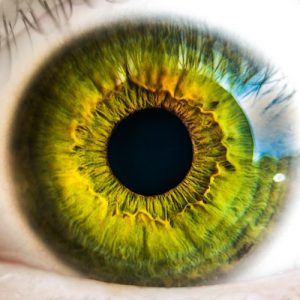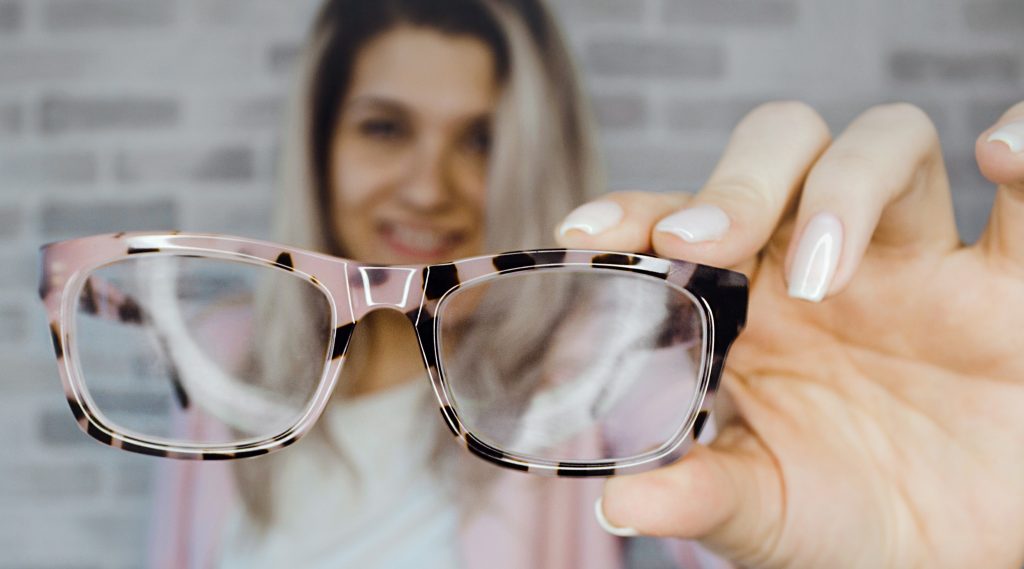Artificial intelligence (AI) could be an ophthalmologists next tool for diagnosing eye diseases. An AI system that can recommend the correct referral decision for more than 50 eye diseases, as accurately as world-leading experts, has been developed by researchers at Moorfields Eye Hospital NHS Foundation Trust, Google’s DeepMind Health and University College London (UCL) Institute of Ophthalmology. The breakthrough research, published online by Nature Medicine, describes how machine learning technology has been successfully trained on thousands of historic depersonalized eye scans to identify features of eye disease and recommend how patients should be referred for care.
Currently, ophthalmologists use optical coherence tomography (OCT) scans as part of the diagnosis process. These scans allow irregularities and  other signs of eye disease to be spotted, however it takes eye health professionals a long time to analyze these highly complex scans, which can impact on how quickly patients can be seen to discuss their diagnosis and treatment. It is hoped that the technology could one day transform the way professionals carry out eye tests, allowing them to spot conditions earlier and prioritize patients with the most serious eye diseases before irreversible damage sets in.
other signs of eye disease to be spotted, however it takes eye health professionals a long time to analyze these highly complex scans, which can impact on how quickly patients can be seen to discuss their diagnosis and treatment. It is hoped that the technology could one day transform the way professionals carry out eye tests, allowing them to spot conditions earlier and prioritize patients with the most serious eye diseases before irreversible damage sets in.
AI Technology Eye Disease Study Design
This study set out to investigate whether AI technology could help improve the care of patients with sight-threatening diseases, such as age-related macular degeneration and diabetic eye disease, by making the analysis of OCT scans faster without losing any of the accuracy in diagnosis.
Using two types of neural network – mathematical systems for identifying patterns in images or data – the AI system quickly learnt to identify ten features of eye disease from highly complex optical coherence tomography (OCT) scans. The system was then able to recommend a referral decision based on the most urgent conditions detected. To establish whether the AI system was making correct referrals, clinicians also viewed the same OCT scans and made their own referral decisions. The study concluded that AI was able to make the right referral recommendation for more than 50 eye diseases with more than 94% of the time, matching the performance of expert clinicians.
Ideally the system could help doctors and other eye health professionals spot serious conditions earlier and prioritise patients who urgently need treatment. Eye diseases remain one of the biggest causes of sight loss, and many can be prevented with early detection and treatment. The AI system was able to detect many forms of macular disease. Age-related macular degeneration (AMD) is the most common macular condition that the AI system is able to detect. Other macular conditions include myopic maculopathy, macular holes, diabetic macular oedema and retinal vein occlusion.
However, unlike previous studies in this area, the study didn’t focus on or exclude any specific eye conditions for this research because we want to create technology that can identify all patients in urgent need of eye treatment, regardless of the specific eye diseases they might have.
The number of eye scans we’re performing is growing at a pace much faster than human experts are able to interpret them. There is a risk that this may cause delays in the diagnosis and treatment of sight-threatening diseases, which can be devastating for patients.” ~Dr Pearse Keane, consultant ophthalmologist at Moorfields Eye Hospital NHS Foundation Trust and NIHR Clinician Scientist at the UCL Institute of Ophthalmology
“The AI technology we’re developing is designed to prioritise patients who need to be seen and treated urgently by a doctor or eye care professional. If we can diagnose and treat eye conditions early, it gives us the best chance of saving people’s sight. With further research it could lead to greater consistency and quality of care for patients with eye problems in the future,” said Dr. Keane.
As many as 11 million people in the United States have some form of age-related macular degeneration. This number is expected to double to nearly 22 million by 2050. The number of people living with macular degeneration is expected to reach 196 million worldwide by 2020 and increase to 288 million by 2040.
The study, which was launched in 2016, brought together leading NHS eye health professionals and scientists from the National Institute for Health Research (NIHR) and UCL with some of the UK’s top technologists at Google’s DeepMind to investigate whether AI technology could help improve the care of patients with sight-threatening diseases, such as age-related macular degeneration and diabetic eye disease. Using two types of neural network – mathematical systems for identifying patterns in images or data – the AI system quickly learnt to identify ten features of eye disease from highly complex optical coherence tomography (OCT) scans. The system was then able to recommend a referral decision based on the most urgent conditions detected.
- To establish whether the AI system was making correct referrals, clinicians also viewed the same OCT scans and made their own referral decisions.
- The study concluded that AI was able to make the right referral recommendation more than 94% of the time, matching the performance of expert clinicians.
- The AI has been developed with two unique features which maximize its potential use in eye care:
- Firstly, the system can provide information that helps explain to eye care professionals how it arrives at its recommendations. This information includes visuals of the features of eye disease it has identified on the OCT scan and the level of confidence the system has in its recommendations, in the form of a percentage. This functionality is crucial in helping clinicians scrutinize the technology’s recommendations and check its accuracy before deciding the type of care and treatment a patient receives.
- Secondly, the AI system can be easily applied to different types of eye scanner, not just the specific model on which it was trained. This could significantly increase the number of people who benefit from this technology and future-proof it, so it can still be used even as OCT scanners are upgraded or replaced over time. The next step is for the research to go through clinical trials to explore how this technology might improve patient care in practice, and regulatory approval before it can be used in hospitals and other clinical settings.
In addition, Moorfields can also use DeepMind’s trained AI model for future non-commercial research efforts, which could help advance medical research even further. Mustafa Suleyman, Co-founder and Head of Applied AI at DeepMind Health, said: “We set up DeepMind Health because we believe artificial intelligence can help solve some of society’s biggest health challenges, like avoidable sight loss, which affects millions of people across the globe. These incredibly exciting results take us one step closer to that goal and could, in time, transform the diagnosis, treatment and management of patients with sight threatening eye conditions, not just at Moorfields, but around the world.
Early Detection is Essential in an Aging Population
Elaine Manna, 71, from north London and mother of three, went blind in her left eye from wet age-related macular degeneration (AMD). She is now being treated at Moorfields Eye Hospital to save the remaining sight in her right eye. She said: “I lost the sight in my left eye in the year 2000 after noticing a sudden blurring of my vision. A few weeks went by and I was starting to get really worried. A doctor then told me I had a bleed at the back of my eye that needed to be treated urgently but it proved too late to save my sight. “AMD has had a major impact on my life. I love going to the theatre but I find it difficult to see people’s faces and I struggle to find my way around dimly lit rooms. I really hope that technology can help people like me in the future.”
Cathy Yelf, chief executive of the Macular Society, said: “Macular disease is the biggest cause of sight loss in the UK, affecting 600,000 people. It is extremely debilitating and timely treatment for patients with wet AMD, such as Elaine, is vital. Pressure on eye clinics has resulted in delays for many patients, which has tragically led to unnecessary sight loss. We’re excited by this latest development and hope in time this technology will alleviate the pressure on clinics and mean patients will get the urgent treatment they need.”





